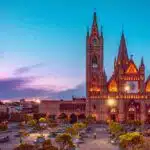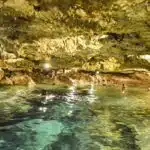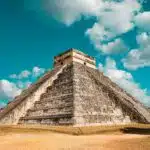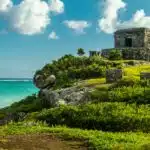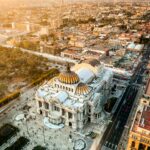Yucatan, Mexico, is home to some of the most breathtaking ancient archaeological sites in the world. Steeped in Maya history and culture, these sites offer a glimpse into the rich heritage of Mesoamerican civilizations.
Must-visit attractions in Yucatan
- Chichen Itza: It is perhaps the most famous archaeological site in Yucatan and a UNESCO World Heritage site. Known for its iconic pyramid, El Castillo, Chichen Itza was a major Maya city from the 7th to the 10th century AD. The site features impressive stone architecture, including the Temple of the Warriors, the Great Ball Court, and the observatory known as El Caracol.
- Explore our dedicated post about Chichen Itza
- Uxmal: It is another significant Maya archaeological site known for its Puuc-style architecture, characterized by intricate stone mosaics and geometric patterns. The Pyramid of the Magician, the Governor’s Palace, and the Nunnery Quadrangle are among the key structures that showcase the advanced engineering and artistic skills of the ancient Maya.
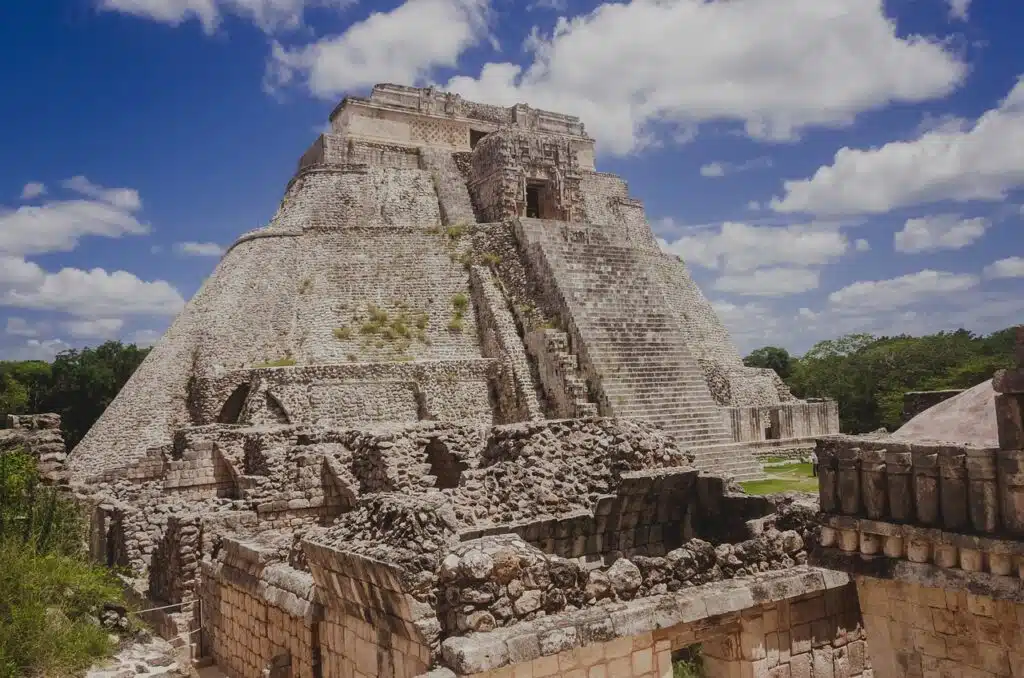
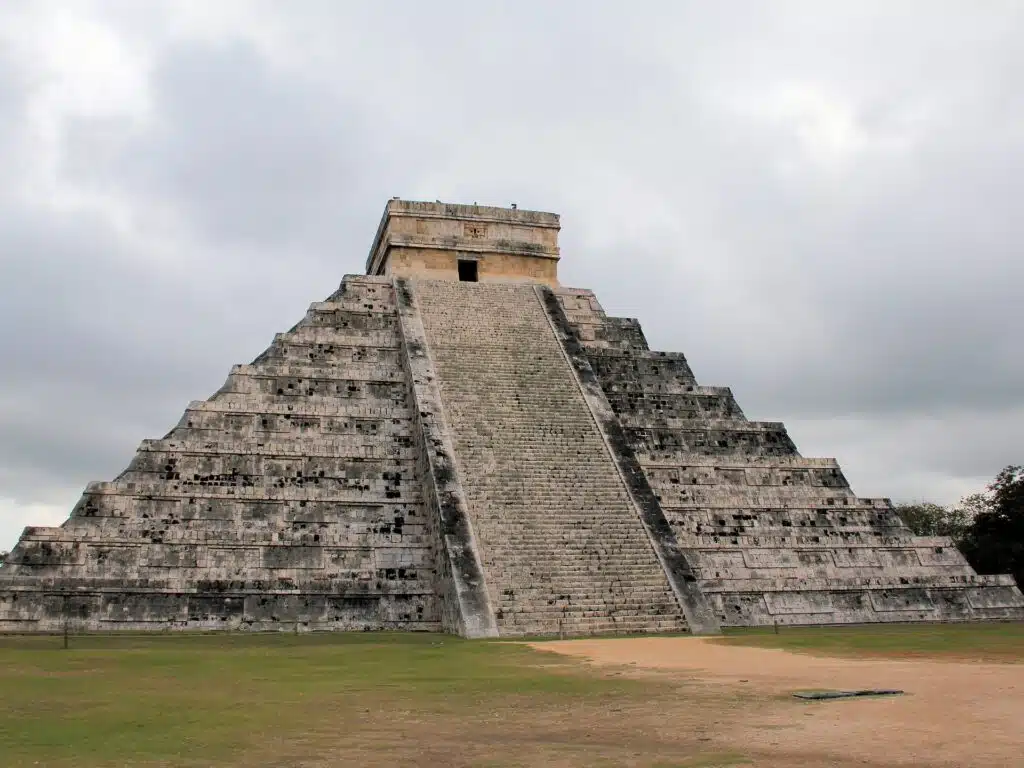
- Ek Balam: meaning “Black Jaguar” in Maya, is a lesser-known but equally captivating archaeological site north of Valladolid. The site features the imposing Acropolis, adorned with intricate stucco sculptures and hieroglyphic inscriptions. Visitors can climb the Acropolis for panoramic views of the surrounding jungle.
- Coba: It is a sprawling Maya city nestled deep in the Yucatan jungle, known for its extensive network of stone causeways (sacbes) and the towering Nohoch Mul pyramid. Climbing Nohoch Mul offers a thrilling adventure and rewards with sweeping views of the dense jungle canopy.
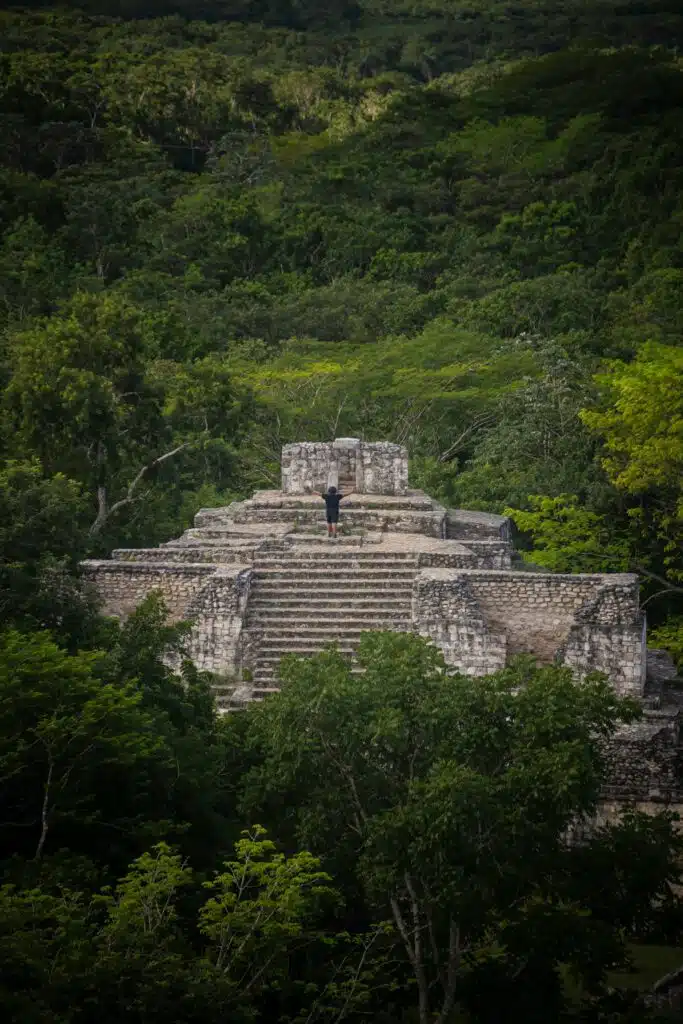

More ideas in Yucatan
Besides Chichen Itza, Uxmal, Ek Balam, and Coba, there are several other archaeological sites worth exploring in the Yucatan Peninsula of Mexico.
- Mayapan: it was one of the last great Maya capitals, located near the town of Telchaquillo in Yucatan. It features a walled city with ceremonial platforms, palaces, and residences. Mayapan is known for its similarity in architectural style to Chichen Itza and is significant for its role in Maya political history.
- Dzibilchaltun: It is an ancient Maya city located just north of Merida, the capital of Yucatan. It is known for its Temple of the Seven Dolls, a unique structure aligned with the spring equinox, allowing sunlight to pass through its doors during the equinoxes. Dzibilchaltun also features a large ceremonial center, a cenote (natural sinkhole), and the Museum of the Maya People.
- Kabah: It is another Puuc-style archaeological site situated south of Uxmal. It is famous for its impressive Palace of the Masks, adorned with hundreds of stone masks of the rain god Chaac. Kabah was an important city in the Puuc region and is noted for its well-preserved structures and intricate architectural details.
- Labna: It is a smaller archaeological site near Uxmal, known for its well-preserved archway and the Palace. It features typical Puuc architecture, including detailed facades with geometric patterns and carved stone latticework.
- Sayil: It is located south of Uxmal and is known for its impressive Palace and El Mirador pyramid. It is part of the Puuc Route and offers visitors a glimpse into the artistic and architectural achievements of the ancient Maya.
These sites, along with others like Oxkintok, Xcalumkin, and Xpuhil, contribute to the rich archaeological heritage of the Yucatan Peninsula. Each site offers unique insights into the Maya civilization’s history, architecture, art, and culture, making Yucatan a fascinating destination for history enthusiasts and travelers alike.
How to Prepare for Your Visit to Yucatan’s Maya Ruins
- Entry Fees: Admission prices vary for each site. It’s advisable to check current rates and opening hours before planning your visit.
- Guided Tours: Consider joining a guided tour to gain deeper insights into the history and significance of each archaeological site.
- Transportation: Renting a car or hiring a local guide can be convenient for exploring multiple sites in Yucatan.
- Weather: Yucatan can be hot and humid year-round. Wear sunscreen, a hat, and comfortable clothing suitable for walking.
Exploring Yucatan’s archaeological sites is a journey through time, offering a profound appreciation for the ancient Maya civilization and its enduring legacy in Mexico’s cultural tapestry. Whether you’re a history enthusiast or a traveler seeking adventure, Yucatan’s archaeological wonders promise an unforgettable experience.

